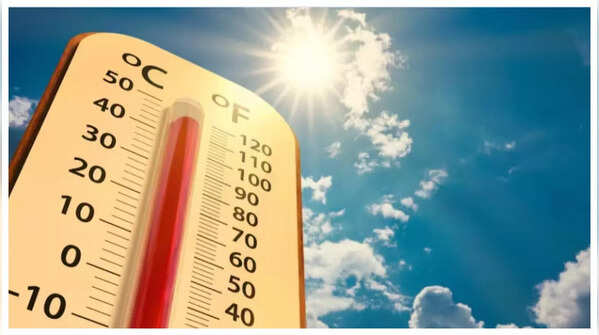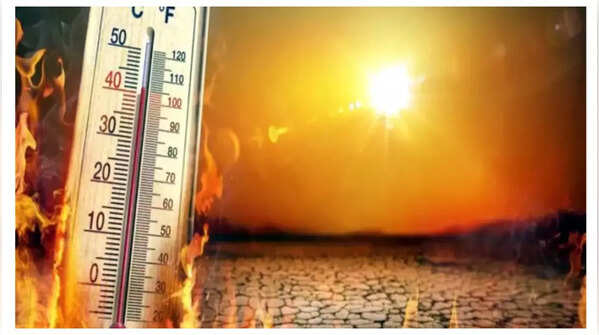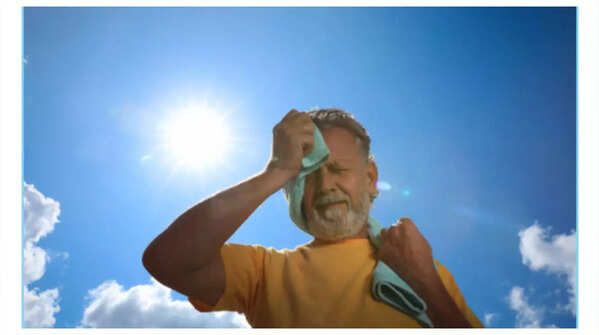Severe heatwave continue to grapple the country, as Jaisalmer bakes at 48.0°C : Why is it getting hotter each year

/6
Most of North India is currently in the throes of a severe heat wave, as Jaisalmer in Rajasthan recorded a sizzling temperature of 48.0°C yesterday, according to the India Meteorological Department (IMD). The temperature in the city was 5.5°C above normal. As shocking as this may sound, this is not a new phenomenon - each year we keep hearing stories of rising temperatures that completely upend life, causing a severe heatwave. But why does this happen? We dig deeper.

/6
The biggest culprit of drastic weather change is global warming. Global warming refers to the long-term increase in Earth’s average surface temperature due to human activities. Going back to the industrial age, people have burned large amounts of fossil fuels like coal, oil, and gas. This releases greenhouse gases such as carbon dioxide (CO2) and methane into the atmosphere.
These gases trap heat from the sun, creating a “greenhouse effect” that warms the planet. According to recent data, global temperatures in 2025 are about 1.75°C higher than pre-industrial levels, marking some of the hottest years on record.

/6
Along with human interference, natural climate patterns also influence yearly temperature changes. Events like El Niño (a phase of the El Niño-Southern Oscillation (ENSO), a global climate phenomenon, characterized by abnormally warm sea surface temperatures in the central and eastern tropical Pacific Ocean) affect global weather by changing ocean temperatures in the Pacific.
For example, El Niño leads to warmer ocean waters and can cause heatwaves and droughts in many parts of the world. However, even when natural cooling events like La Niña (periodic cooling of ocean surface temperatures in the central and east-central equatorial Pacific) occur, global temperatures remain high due to the underlying warming trend. This means that natural cycles can make some years hotter or cooler, but the overall trend is rising temperatures.

/6
Urbanization has creeped in everywhere and Tier 1 cities are affected the most. When natural land is replaced by buildings, roads, and concrete, it creates “urban heat islands.” These areas absorb and retain more heat during the day and release it slowly at night, making cities warmer than nearby rural areas.
Deforestation and changes in land use also reduce the Earth’s ability to cool itself. Trees and plants help lower temperatures by providing shade and releasing moisture into the air. When forests are cut down, the land becomes hotter and drier, contributing to rising temperatures locally and regionally.

/6
Several natural factors that once helped keep temperatures lower are on the downside. For example, cloud cover and aerosols (tiny particles in the air) reflect sunlight back into space, helping cool the Earth. However, changes in air pollution and weather patterns have altered cloud formation and aerosol levels.
Additionally, melting ice and snow reduce the Earth’s reflectivity, or albedo. White ice reflects sunlight, but when it melts, darker land or water absorbs more heat, accelerating warming. This feedback loop makes hot regions hotter and contributes to the rise in extreme temperatures seen in many parts of the world.

/6
The rising heat affects people, animals, and the environment in many ways. Hotter summers increase the risk of heat-related illnesses and deaths, especially among vulnerable groups like the elderly and children. Water shortages become more common as evaporation increases and rainfall patterns change.
Agriculture suffers from heat stress and drought, threatening food security. Wildlife habitats shrink or shift, causing stress to many species. Rising temperatures also increase energy demand for cooling, putting pressure on electricity supplies.
Follow Us On Social Media








